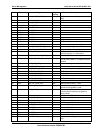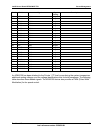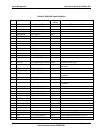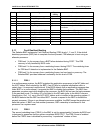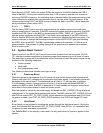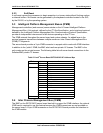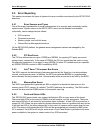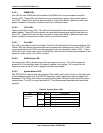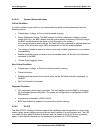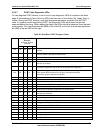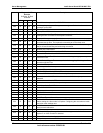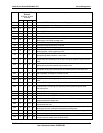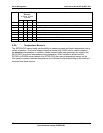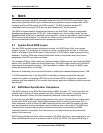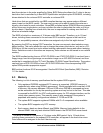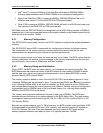
Server Management Intel® Server Board SE7501WV2 TPS
Revision 1.0
Intel reference number C25653-001
66
5.5.5.5.1 System Status Indications
Critical Condition
A critical condition is any critical or non-recoverable threshold crossing associated with the
following events:
• Temperature, Voltage, or Fan critical threshold crossing
• Power Subsystem Failure. The BMC asserts this failure whenever it detects a power
control fault (e.g., the BMC detects that the system power is remaining ON even though
the BMC has de-asserted the signal to turn off power to the system).
A hot-swap backplane would use the Set Fault Indication command to indicate when one
or more of the drive fault status LEDs are asserted on the hot-swap backplane.
• The system is unable to power up due to incorrectly installed processor(s), or processor
incompatibility.
• Satellite controller sends a critical or non-recoverable state, via the Set Fault Indication
command to the BMC.
• “Critical Event Logging” errors.
Non-Critical Condition
• Temperature, Voltage, or Fan non-critical threshold crossing
• Chassis Intrusion
• Satellite controller sends a non-critical state, via the Set Fault Indication command, to
the BMC.
• Set Fault Indication Command
Degraded Condition
• Non-redundant power supply operation. This only applies when the BMC is configured
for a redundant power subsystem. The power unit configuration is configured via OEM
SDR records.
• A processor is disabled by FRB or BIOS.
• BIOS has disabled or mapped out some of the system memory.
5.5.5.6 ID LED
The Blue ID LED, located at the back edge of the baseboard near the speaker, is used to help
locate a given server platform requiring service when installed in a multi-system rack. The LED
is lit when the front panel ID button is pressed and it is turned off when the button is pressed
again. A user-defined interface can be developed to activate the ID LED remotely.



